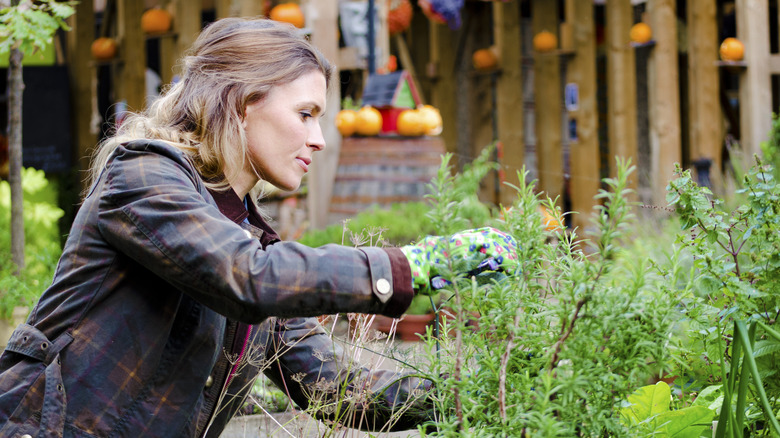Is there such a thing as ‘lazy gardening’? If you want to keep an attractive and productive garden, there’s designing and planning, shopping and buying of plants and pots, planting and propagating, pest control, and that’s without even mentioning care and maintenance — yes, we mean pruning! Surely, there’s no place for a lazy gardener? Whoever said that hadn’t heard of ‘chop n drop’ pruning, an easy and beneficial way to take care of your plants.
It’s also perfect for efficient gardeners and the gardener who wants to ‘give back’ to nature. Why spend all your money on mulch and fertilizer when you could simply let the plants do what nature intended? When you chop n drop, essentially, you imitate and support natural processes. When twigs, flower heads, and leaves fall in the wild, they decompose and turn back into soil, fortifying the ground around the plants they fell from. In nature, the plant material is usually dead or dying when it falls off the plant, but living plants also lose leaves, twigs, and flowers when they are disturbed by animals and adverse weather. There’s no harm in pruning your plants and letting the fresh plant matter fall to the ground and be left there.
Obviously, this isn’t the method for anyone looking to achieve a beautifully manicured garden because we’re talking about leaving plant litter scattered on the floor. There are many benefits to this unusual pruning method, though, which we’ll look at in this article.
How to do ‘chop n drop’ pruning

There’s actually a little more to it than simple ‘chopping and dropping’. Believe it or not, permaculturists across the globe have been putting this method to good use for years, which means a certain amount of technique has developed in order to make it as effective as possible. This includes choosing the right season and assessing which plants and climates will benefit from it the most. Rainy seasons are the best time because wet plant material decomposes faster, dry or hot weather could pose to be more of a fire hazard, and dry leaves and stems will probably just blow all over your garden during windy weather.
Not all plants are chop n drop friendly. You want to aim for green organic material that breaks down quickly. Go for plants that easily absorb things like nitrogen, potassium, and other nutrients from the soil, because the nutrients will be released back into the ground when they decompose, and nearby growing plants can benefit from this.
Practically speaking, it can also help to break down a little further anything you prune off a plant. When you chop n drop while pruning, the plant material will eventually break down to feed the soil, and in the process, you are essentially creating mulch anyway. Plants that regenerate quickly are perfect for creating chop n drop mulch and are very useful to have in a natural or ‘forest’ style garden.
Why ‘chop n drop’ pruning is more beneficial for your garden
Aside from reducing your gardening duties and garden waste, chop n drop pruning can be really beneficial for your plants in a number of ways. We’ve already talked about the recycling of nutrients back into the soil during the decomposition of organic matter, but when you ‘chop n drop’ prune plants with deep-tapping roots, the nutrients they absorb from deep down in the ground, like trace minerals, can be made available to plants in the area that wouldn’t normally have access to them.
The mulch you create when you leave organic matter on the ground after pruning helps to protect the topsoil from the elements by creating an insulating layer on the surface of the soil. This also allows the soil to retain more moisture for plants by eliminating water loss by evaporation, ensuring that plants growing too close together don’t need to compete for nutrients or water.
Leaf litter and plant debris also provide cover for beneficial insects hunting in your garden — like predatory ground beetles that prey on a wide variety of unwelcome pests, such as cabbage root maggots and slugs that you definitely don’t want in your vegetable patch!